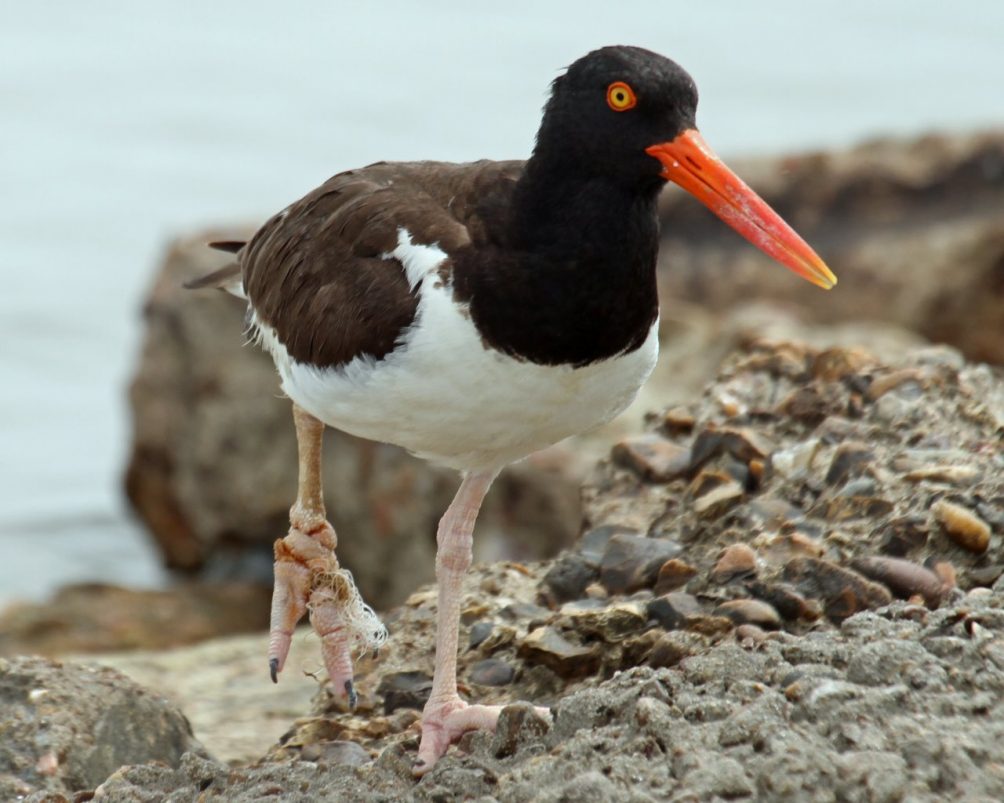by Kaitlyn Braddock
There are invisible shackles hidden in all of our oceans, lakes, and waterways. They imprison our wildlife in the very ecosystems they live in, leading to cuts, amputations, starvation, and even death. Unfortunately, this is no natural, circle of life situation. Humans are responsible for this material in the water and we need to be aware of the consequences. Let’s talk about lost and discarded fishing line.

First off, why is lost and discarded fishing line even a problem to begin with? Part of the issue is the fact that most fishing line takes an extremely long time to biodegrade. We’re talking 600 years, over twice the amount of time the United States has been a country. It’s also plentiful and very hard for animals to free themselves if they get stuck in it. It can look like food or contain entangled food, leading wildlife to mistakenly consume it. What is the result of an animal encounter with fishing line? Tangled feet and wings keep birds from walking and flying, making them vulnerable to predators and limiting their access to food. Tightly wrapped line can cut off circulation, potentially amputating whatever body part it’s caught on. Mistakenly eating fishing line can fatally damage internal organs and become impacted in the stomach, causing starvation. Some birds will even use fishing line as nesting material, inadvertently endangering their chicks. Then there’s “ghost fishing” – when nets, lines, crab traps, and other fishing gear continue to catch aquatic life even after they’ve been lost or discarded. It’s not just fish, either: Any kind of aquatic animal can be affected or killed by ghost fishing, from starfish to turtles to dolphins. Googling “fishing line and wildlife” will bring up numerous sobering photos and stories, if you want an eye-opening experience.
Now that we know what the problem is, we can talk about solutions. For one, monofilament fishing line, one of the most common kinds, is recyclable. Texas A&M’s Monofilament Recovery and Recycling webpage (mrrp.tamu.edu/binlocations.html) has a very long list of monofilament recycling bins in Texas, many of which are conveniently located right next to the bodies of water being fished. Line that can’t be recycled should be cut into very small pieces, less than 6 inches, and put into a trash can with a lid that’ll keep curious and hungry animals out and keep the fishing line from blowing away. What if you find an animal that’s caught in fishing line? The best thing for both your and the animal’s safety is to call a local wildlife rehabilitator and seek professional instructions. Want to just help out in general? Consider putting some time into a local shoreline cleanup event or volunteering to monitor one of the previously mentioned fishing line recycling bins. The more hands on deck, the more litter gets picked up, and the less our wildlife comes in contact with this life-threatening pollution.
Lost and discarded fishing line is not only a problem for our boat motors, but also for the diverse cast of animals we are lucky to call neighbors. There are steps we can take to lessen our impact and the more steps we take, the nicer the world will be for ALL of us.

